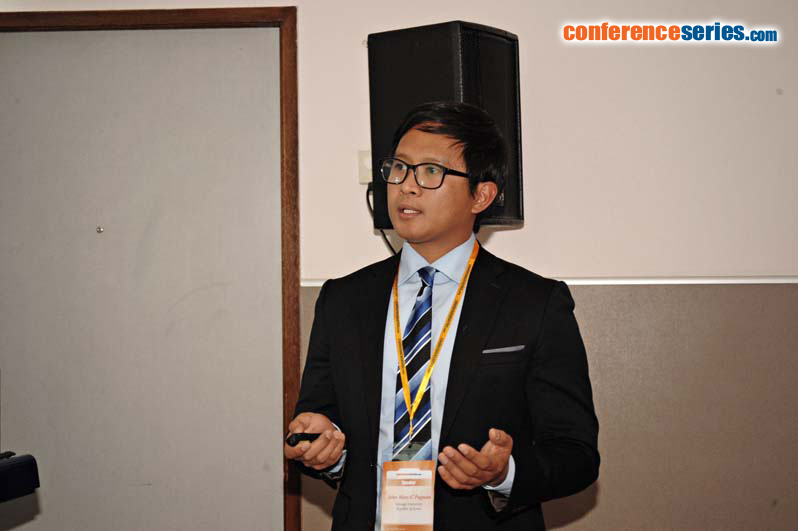
John Marc C Puguan
Myongji University, Republic of Korea
Title: Main-chain polyelectrolyte based on 1,2,3-triazolium with pentaethylene oxide spacer obtained via click chemistry for all-solid state electrochromic device applications
Biography
Biography: John Marc C Puguan
Abstract
Currently the use of ionic liquids as electrolytes is enhancing the performance, security, speed, cyclability and long term stability of various electrochemical devices such as batteries, solar cells, fuel cells, super-capacitors, electrochromic devices, light-emitting electrochemical cells, actuators, biosensors and field effect transistors among others as well as in catalysis. However, ionic liquids are intrinsically liquids that present drawbacks that are difficult to overcome such as the need of thorough encapsulation due to leakage. Replacement of the liquid electrolyte with safer and mechanically stable material but still exhibiting excellent electrochemical properties is the goal of this study. A new poly(ionic liquid) or PIL which is a special type of polyelectrolyte carrying a cationic center constrained in the repeating units of the main chain is synthesized. This exhibits a dynamic combination of the unique properties of ionic liquids and the solid state properties of a polymer. A heterobifunctional ethylene glycol (EG)-based monomer was synthesized prior to the cycloaddition reaction. Propargyl group was introduced on one of the terminal end of the PEG unit and an azide group on the other end. Monomer was purified and underwent a copper(I) catalyzed azide-alkyne cycloaddition (CuAAC) reaction to yield poly(1,2,3-triazole). PIL was reacted with methyl iodide to activate the cationic moiety. Subsequently, the iodide anion underwent anion exchange with bis(trifluoromethane)sulfonimide lithium (LiNTf2) salt to yield poly(3-methyl-1,2,3-triazolium bis(trifluoromethane)sulfonimide). This new PIL exhibits ionic conductivity of 1.2×10-4 S cm-1 at 30 oC which is at par with best side-chain PILs in literature. This new electrolyte efficiently switches an electrochromic device (ECD) with 18% optical contrast from its transparent state to a colored state and vice versa. The development of this polyelectrolyte with simple structure and excellent physical and thermal properties is promising for the design of new all-solid state electrochromic devices and other electrochemical device applications.
Speaker Presentations
Speaker PPTs Click Here


